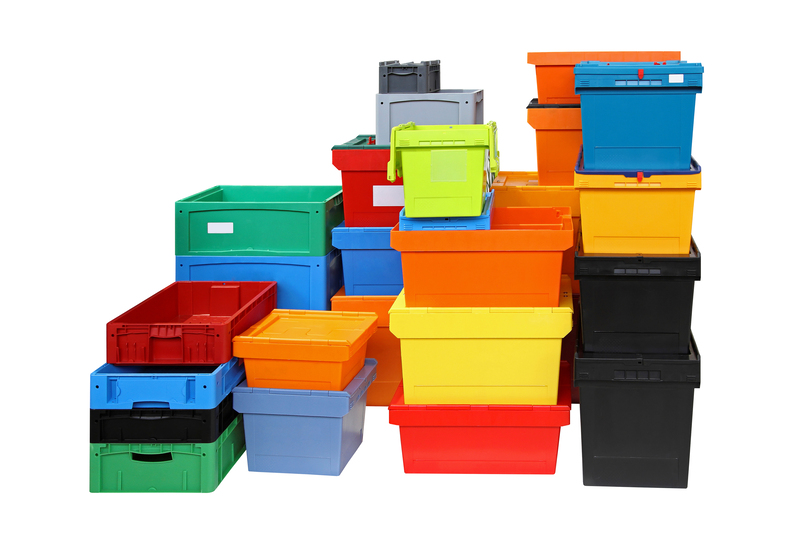Tips for Effortlessly Moving Your Bed and Mattress
Posted on 15/06/2025
Tips for Effortlessly Moving Your Bed and Mattress
Moving your bed and mattress doesn't have to be a stressful or strenuous process. Whether you're relocating to a new home or simply rearranging your bedroom, knowing the right techniques and having a strategic plan in place can make all the difference. In this comprehensive guide, we'll cover a variety of tips for effortlessly moving your bed and mattress to ensure your move is as smooth as possible, while keeping your belongings--and yourself--safe and secure.
Why Efficient Bed and Mattress Moving Matters
Moving a bed and mattress is not just about physical effort; it's also about protecting your investment in your sleep setup. Both beds and mattresses can be heavy, bulky, and prone to damage if not handled properly. Understanding how to move a mattress and bed frame easily saves time, reduces risk of injury, and preserves the integrity of your furniture.
- Prevents personal injury
- Stops mattress or bed frame damage
- Keeps your mattress clean and fresh
- Saves time and effort

Essential Preparations Before Moving
Measure Doorways and Spaces
Before you begin moving your bed or mattress, it's critical to measure doorways, hallways, and staircases. Mattresses, especially queen or king sizes, may not fit through tight corners or narrow doors without careful maneuvering. Write down all key measurements and compare them to your bed dimensions. This simple step will spare you a lot of frustration later on.
- Tip: Remove doors from hinges if extra space is needed.
Gather the Right Equipment
Using proper moving equipment streamlines the process and keeps your furniture safe. Here's a checklist:
- Mattress bag or plastic wrap (to protect from dust and damage)
- Furniture sliders (for hardwood or carpeted floors)
- Dolly or hand truck (to help transport heavy pieces)
- Moving straps (to distribute weight and prevent dropping)
- Tool kit (for disassembling bed frames)
- Soft cloths or covers (to wrap furniture parts)
How to Disassemble Your Bed Frame
One of the key bed and mattress moving tips is to take apart your bed frame if possible. Disassembling makes transportation much simpler and reduces the risk of scratches or breaks.
- Remove bedding and mattress: Start with a blank slate. Strip bedding and place your mattress in a protective mattress bag.
- Document assembly: Take pictures or videos of your bed as you take it apart. This will help during reassembly.
- Detach headboard, footboard, and side rails: Use your tools to carefully remove hardware.
- Keep hardware in a labeled bag: Place all screws, nuts, and bolts in a small bag, label it clearly, and tape it to one of the bed sections. This way, you won't lose critical pieces during the move.
- Wrap fragile parts: Cover wooden or upholstered sections with soft cloths or bubble wrap for protection.
How to Move Your Mattress Like a Pro
Prepare Your Mattress
Moving a mattress doesn't have to be a hassle. For easy mattress moving, follow these steps:
- Clean the mattress. Vacuum both sides to remove dust and debris before packing.
- Bag it up. Use a specialized mattress moving bag or heavy plastic sheeting. Seal it tightly to prevent exposure to dirt, moisture, or pests.
- Check size and weight. Some mattresses--like memory foam or hybrid designs--are heavy and floppy. Recruit help for larger sizes, or consider professional movers.
Transporting the Mattress
The most efficient way to carry a mattress is upright on its side. Carrying it flat can strain your back and risks it bending sharply. Here's how:
- Stand the mattress up on its side. Hold from different corners if you have help, or use moving straps for better leverage.
- Navigate carefully through doorways and halls. Tilt and pivot as needed, but avoid folding unless the mattress is designed for it (some boxed mattresses are foldable).
- Use a dolly for heavier mattresses. Place the mattress on the dolly to reduce manual lifting, especially for long distances.
- Note: Only fold memory foam mattresses that are specifically rated for folding! In other cases, folding can permanently damage the internal structure.
Tips for Moving a Bed Frame Easily
Disassembly is Key
Many bed frames are designed for disassembly. Taking your bed frame apart ensures safer and more effortless bed frame relocation. Remember to:
- Keep all hardware together and labeled.
- Group similar pieces (side rails, slats, headboard) together.
- Wrap fragile edges and ends.
Handling Large or Heavy Bed Frames
Some beds--especially king-size or platform beds--are heftier than others. To make moving these easier:
- Enlist help from friends or movers.
- Slide heavier pieces using furniture sliders. This prevents damage to floors and reduces lifting strain.
- Lift with your legs, not your back. Bend at the knees and keep your back straight when picking up heavy sections.
Protecting Your Mattress and Bed During the Move
Use Mattress Bags and Proper Padding
Your mattress is an investment in good sleep, so it pays to protect mattresses during moving. Always use a mattress bag. If unavailable, several layers of plastic sheeting sealed with tape can suffice. For wooden bed frames, wrap with blankets or bubble wrap to shield from scratches and dings.
- Avoid sharp bends, drops, or placing heavy items on mattresses.
- Use multiple layers of padding around legs and corners of frames.
Keeping Everything Clean
While relocating, mattresses and bed parts can easily collect dust or spots. Use plastic mattress protector bags and washable cloth wraps for upholstered headboards. Seal all fabric or cushion components away from dirt and moisture until you're ready to set up in your new space.
Loading Your Bed and Mattress Into a Vehicle
Best Practices for Secure Loading
How you load your mattress and bed frame depends on the size of your moving vehicle and the dimensions of your furniture. For the safest and most convenient bed and mattress transport:
- Keep the mattress standing on its side. If the vehicle is tall enough, place the mattress flat against a wall. Never stack heavy items on top.
- Secure with ropes or straps. Use ratchet straps to prevent shifting during transit.
- Lay frame parts flat. Group and stack slats, rails, and boards, then secure them to prevent sliding.
- Fill gaps with soft items. Use bedding or pillows as extra padding to prevent movement and impact damage.
Setting Up in Your New Place
Reassembly Tips for Beds and Mattresses
When you arrive, unpack the bed frame and mattress first to ensure you have a place to rest after a long day of moving. Follow your earlier photos or notes to reassemble the frame. Here are some assembly tips for an efficient setup:
- Sort hardware and tools before starting.
- Assemble the frame first before unwrapping the mattress.
- Inspect all joints and fasteners for damage or missing parts.
- Recruit help for awkward or heavy lifts.
- Once set up, let your mattress breathe by leaving it uncovered for a few hours.
DIY vs. Professional Movers: Which Is Better?
For the most stress-free bed and mattress relocation, evaluate your circumstances honestly. A DIY move is cost-effective and gives you full control, but can be physically demanding. Hiring professional movers may be the best bed and mattress moving decision for bulky furniture, tight spaces, or upper-floor apartments.
- DIY: Best if you have help, experience, and a suitable moving vehicle.
- Professional movers: Ideal for long distance moves, large homes, or if you lack time and manpower.

Frequently Asked Questions About Moving Beds and Mattresses
Can I fold a memory foam mattress to move it?
No, except for mattresses designed as "bed in a box". Most memory foam or spring mattresses can be permanently damaged if folded or bent sharply. Refer to the manufacturer's guidelines before folding any mattress.
How do I keep my mattress clean during the move?
Always use a protective mattress bag, and avoid placing it directly on dirty floors or ground. Store the mattress upright and transport it as one of the last items, if possible, to minimize soiling.
Is it necessary to disassemble my bed frame?
It is highly recommended. Disassembling reduces the risk of breakage and makes the bed frame easier to move through tight passages.
How many people do I need to move a king-size mattress?
At least two. King and queen-sized mattresses are heavy and cumbersome. Recruit a helper, or use moving straps and a furniture dolly for safety.
Conclusion: Move Your Bed and Mattress with Confidence
Moving your bed and mattress doesn't have to be a backbreaking project. With a bit of preparation, the right tools, and a plan in place, you can relocate your sleep sanctuary quickly and safely. Remember to measure, protect, disassemble, and recruit assistance when needed. These easy bed and mattress moving tips will help you transition to your new home (or new room) with as little stress--and as much effortlessness--as possible.
Sweet dreams--and happy moving!



